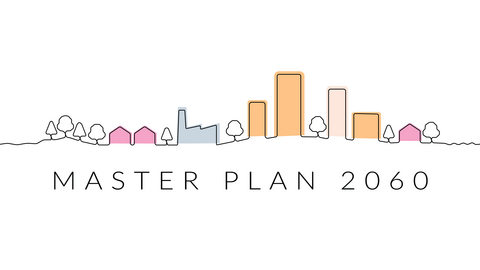Goals agreed for Espoo master plan

The new City of Espoo Master Plan covers the entire city, and its goals are set for 2060. The city board formally accepted the goals of the master plan at its meeting on 13/03/2023. The goals emphasise sustainable city growth, climate smartness, improvement of transport connections, general pleasantness, and proximity to nature. Next, these goals will be used to develop a draft for the master plan.
The goals of the master plan are based on the city's strategy, the Espoo Story. The master plan is a general plan of land use and traffic arrangements where the city and its development is viewed as a whole. The master plan directs the placement and coordination of the city's different functions, such as residential areas, services, jobs and recreational areas.
The newly accepted goals will direct the entire master plan development process and set the course for the city's development for the coming decades.
"We will now use these goals as a basis and begin to develop a draft master plan. Since the master plan covers the entire City of Espoo, the source materials needed for the planning work will be voluminous. Also, our planners must develop a draft that takes into account multiple, sometimes conflicting points of view and aspirations", Essi Leino, Master Planning Manager at the City of Espoo City Planning Department, on the challenges of master plan work.
A sustainably growing and densifying Espoo
Based on current estimates, the city will continue to grow. The city aims to ensure that this growth is both well-controlled and sustainable by taking proactive steps to prepare for both a bigger population and growing job opportunities.
Central locations should be attractive and provide a broad range of services. One aim of the master plan is to enable the development of both blocks of flats and detached-house areas that are unique. Both will be needed in a diverse city aiming to cater to a wide range of residential preferences. At the same time, segregation must be tackled.
To be sustainable, a city must be located in areas along railway tracks and other significant public transport routes, and Espoo’s future growth is primarily directed to such areas. The master plan aims to ensure that the needs of the city's diverse economy and its many educational institutions and clusters of innovation are met to enhance the city's vitality. For this reason, it is important that we also reserve sufficient space and building opportunities for our diverse and growing employment sectors.
Espoo is a climate-smart city of networks
Climate change will be tackled by supporting carbon-neutral energy solutions and protecting the city's carbon sinks and reservoirs. When the master plan is being developed, the latter can be ensured by marking our most important sinks and reservoirs as green areas.
The master plan also aims to support a green transition towards low emission forms of transport by connecting the city's central locations with efficient public transport. One goal is to enhance the city's internal, east-west public transport network. Bicycling opportunities will also be enhanced by developing the city's main bicycle route network.
Espoo is pleasant and close to nature
As the city becomes denser, steps will be taken to make its urban environment pleasant and walkable and services accessible. Important cultural environments must be identified to ensure that they are maintained as the city is being developed.
One of the master plan's goals is proximity to nature, something that is also often emphasized by resident survey respondents. It is also vital to ensure that various green spaces form a network that is interconnected. Espoo in fact offers significant blue-green areas that are important for outdoor activities in not only Espoo, but also the entire Helsinki Capital Region. Based on residents' surveys, the sea, other bodies of water and their surroundings are highly valued, due to which the master plan's aims include the development of their accessibility and services.
Espoo wants to protect biodiversity. Single large green areas are an important part of our ecological network and play an important role in climate change adaptation. At the same time, in a densifying urban environment, even small green areas, such as neighbourhood parks, help maintain biodiversity.
The draft master plan will be completed in 2024 and a proposed final one during 2025–2016. The city's aim is to have the final master plan accepted in 2027.
Read more: Espoo Master Plan 2060